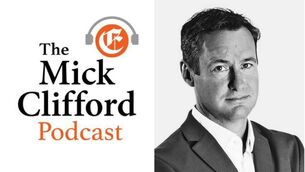Growing numbers of autism diagnoses reflect progress, not crisis

Public figures, including Robert F Kennedy Jr, speak of an 'autism epidemic', often linking rising prevalence to speculative environmental 'causes' and implying that something unnatural or imagined 'toxins' are at work. File picture: AP/Mark Schiefelbein
We are living through a period of large-scale speculation regarding both the meaning and proposed causes of diagnoses such as autism or similar neurodevelopmental conditions.
In his seminal work philosopher of science Thomas Kuhn suggested that periods of uncertainty within scientific knowledge can lead to a build-up of anomalies that cumulatively spark changes in how we understand the world.
Kuhn named these changes paradigm shifts — a conceptual revolution that redefines the basic assumptions within a scientific field, whereby the previous prevailing framework itself is replaced by a new one.
Given that the recent public debate around autism is increasingly framed in the language of crisis, is it reasonable to ask whether we are living through a paradigm shift in how we understand autistic people and how we understand their place in society?
This atmosphere of anomaly and debate is evident in the polarised explanations now circulating about autism prevalence.
Public figures such as Robert F Kennedy Jr speak of an “autism epidemic”, often linking rising prevalence to speculative environmental “causes” and implying that something unnatural or imagined “toxins” are at work.
The recent unsupported claims about proposed links between paracetamol and autism reflect how quickly speculation can outpace evidence. From this perspective, any increase in the prevalence of autistic people within society is viewed as a medical constellation of symptoms caused by environmental or medical toxins.
Vaccines, for example, have been commonly cited as a potential cause, despite decades of evidence to the contrary. This frames autism (or other forms of neurodivergence) as a medical condition that needs to be treated, ironically, with other medical interventions or drugs.
Simultaneously, in Britain, there is an increasing narrative within media and political discourses regarding a proposed “crisis of overdiagnosis”.
Author Suzanne O’Sullivan and politicians Kemi Badenoch and Jeremy Hunt have pointed to a growing number of people, particularly young people, being labelled with conditions such as autism or ADHD (among others). This perspective decries the over-medicalisation of the process of supporting autistic children or adults.
According to Hunt: “As a society, we seem to have lost sight of the fundamental reality that child development is a messy and uneven process.”
Kemi Badenoch, the leader of Britain's Conservative Party, recently endorsed a similar view in the pamphlet , which claimed that people with diagnoses (such as autism) receive “economic advantages and protections".
The underlying argument is that diagnostic labels are increasingly used to secure access to public supports that may be unfairly or excessively distributed.
O’Sullivan suggests that many of these individuals experience only mild traits, and that a diagnosis may do more harm than good if it reinforces a sense of being “ill” or impaired. Hunt cautions that the provision of a label comes from an “excessive impulse to medicalise and diagnose the routine in a manner that can undercut grit and resilience".
This frames access to services for autistic people, and to a diagnosis itself, as being potentially harmful and infantilising for them, leading to underdevelopment of “resilience” or similar features of proposed character.

Together, these divergent claims — whether invoking an autism “epidemic” or warning of widespread overdiagnosis — underscore the need for deeper reflection on how autism has developed as a diagnostic category.
More broadly, we also need to consider how the place of autistic people in society has been evolving.
Autism has a well-documented clinical history, first described by Leo Kanner in 1943 in the US, while Hans Asperger independently reported in Austria in 1944 on individuals whose presentations differed from Kanner’s. From the outset, definitions of autism have been diverse and continually evolving, reflecting both the condition’s varied manifestations and our ongoing evolving understanding.
The temptation to treat rising diagnoses as proof of over-medicalisation overlooks a more straightforward explanation: Diagnostic practice has changed because our understanding of autism has changed.
Indeed, the argument of authors such as O’Sullivan might sound like a call for caution regarding how clinical practices have evolved in recent years. 40 years ago, diagnostic criteria were far narrower. Clinicians looked for more pronounced behavioural differences, limited language, profound social withdrawal, and developmental delays.
Up to the 80s, autism was seen as a childhood condition called “infantile autism”. However, we have known for decades that autism is a lifelong difference in neurotype, and older clinical definitions led to many autistic people being missed — especially girls and women — but also other adults with severe early life indicators, and people from other cultures who may have presented differently.
Successive revisions of clinical practice guidelines, such as the , have corrected those errors, clarifying that autism is defined by social-communication differences and restrictive or repetitive behaviours, not by intellectual disability or severity of cognitive “impairment”.
These criteria reflect a broader view of neurodiversity, one that better captures the reality of autistic experience.
It is these changes that have led to the increase in numbers receiving a diagnosis of autism, along with greater funding of services to provide access to for more people.
The changes in Ireland’s recent data illustrate the point regarding how these changes have led to higher prevalences across the country. The changes in schools have been rapid and structural.
The National Council for Special Education reports that over 20% of pupils are identified with a learning difference and that the number of special classes has increased more than sixfold in the past decade, nearly 90% of them autism-specific.
Moreover, two thirds of autistic pupils here are educated in mainstream classrooms, where diagnosis remains the key that unlocks reasonable accommodations (such as sensory supports, differentiated teaching, and assistive technology). Without identification, those adjustments are not guaranteed — leaving students to struggle in silence.
These figures do not signal an epidemic; they reflect a system trying to reflect the diversity of needs within our classrooms. Indeed, it could be argued that they reflect the outcomes of the success within our education system, where school completion rates far outstrip those of past decades and levels of participation in further and higher education are far in excess of those in past decades.
Suggesting, as authors such as O’Sullivan does, that only those who are clearly “impaired” should qualify for diagnosis excludes large numbers of autistic people whose difficulties, though less obvious, are still meaningful.
The changes to clinical definitions of autism in recent decades are not the result of “relaxed” standards, but of accumulated evidence that earlier criteria were inaccurate and unjust. To portray this overdue recognition as diagnostic inflation is to mistake scientific self-correction for excess.
Critics argue that a label may do more harm than good, especially for those with “mild” traits.
In O'Sullivan's words: “A child with severe autism is very disabled by it. Therefore, the medical diagnosis is required to get them treatment pathways”.
However, existing research which explores the views of autistic individuals regarding being diagnosed suggests the opposite. Receiving a diagnosis often brings self-understanding, validation, and a pathway to supports. The harm lies, not in naming difference, but in withholding recognition and resources until someone is judged “severely disabled".
A concerning issue is that autism is identified at higher rates among people facing significant life challenges or social dislocation.
For example, a recent Swedish study of adults without a prior autism diagnosis presenting at psychiatric outpatient services estimated that about 18.9% of new adult outpatients met the diagnostic criteria for autism, underscoring the high prevalence in mental health settings.
Similarly, recent research suggests that autistic people are markedly over-represented in homeless populations: More than 12% of individuals using British homeless services meet the diagnostic criteria for autism. A further 8.5 % show substantial traits, despite neither group having a prior diagnosis.
In addition, studies also indicate that autistic individuals may be over-represented in prison populations — with most such prisoners being undiagnosed. While only about 1–2% of the general population is estimated to be autistic, prevalence estimates within British prisons range from 4-15%.
A review in reported that, while autistic people do not offend at higher rates, they are more frequently imprisoned. As these participants were undiagnosed, it is likely they also lacked appropriate support services.
Rather than gatekeeping access to diagnosis, such evidence highlights the critical importance of access to diagnosis. Early recognition and robust, neuroaffirmative services are crucial to prevent avoidable social marginalisation for autistic people.
If there is a paradigm shift underway, it is not towards overdiagnosis but towards a broader understanding of neurodiversity and civic belonging.
Recognition through diagnosis enables equity in education, employment, and community life. It is a tool of justice rather than a marker of pathology.
The real challenge is whether our schools, workplaces, and public services will adapt to this understanding.
Progress will not be measured by lowering prevalence figures or tightening diagnostic thresholds, but by building environments where autistic people can flourish without having to justify their existence.
- Neil Kenny is an associate professor at DCU's School of Inclusive and Special Education













